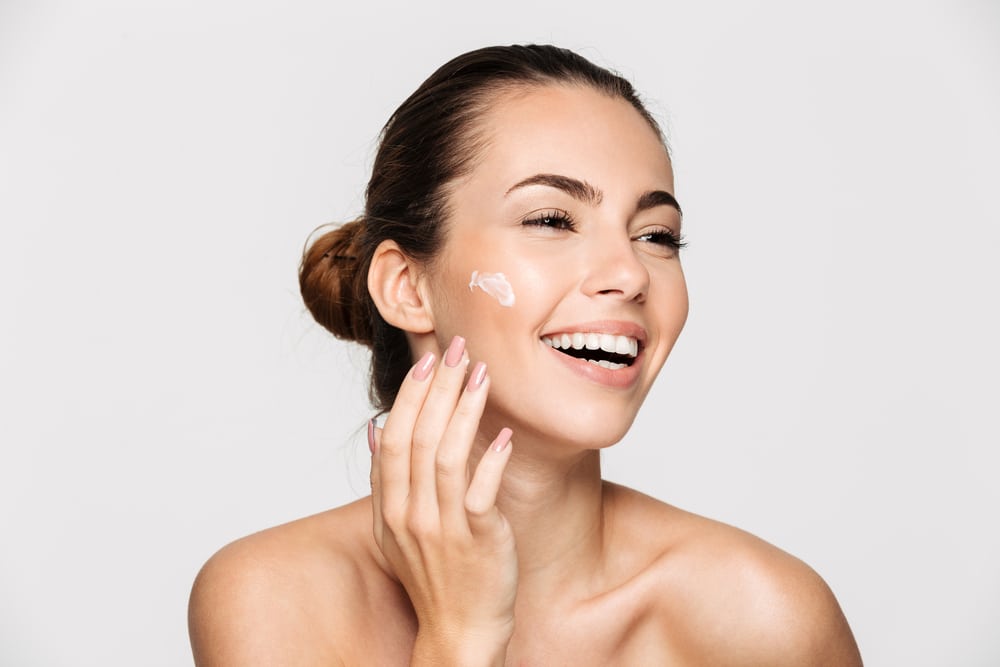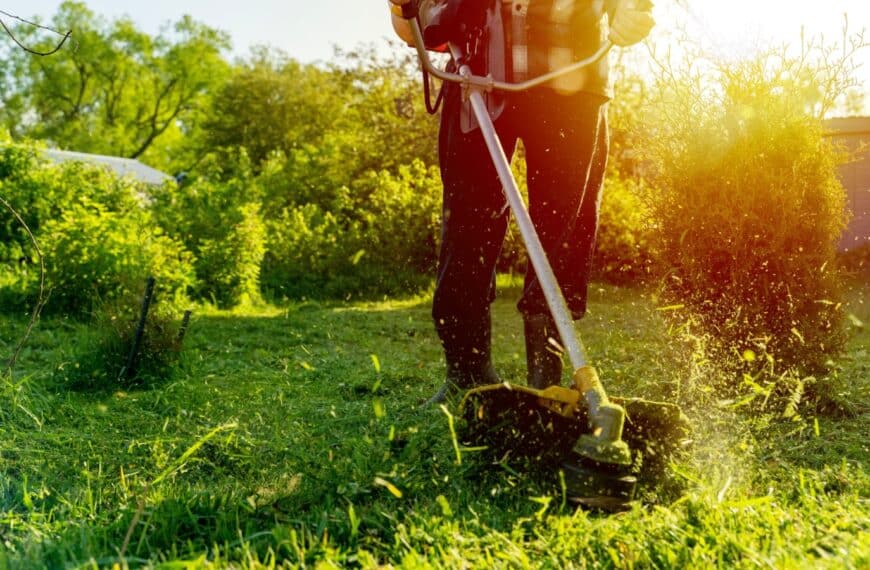A natural moisturizer is the most crucial step in any skincare routine. Missing it is a road to aging, dull, and tired-looking skin. But it’s challenging to know what to use. It’s especially tough when you’re trying to save money on skincare.
Let’s face it: the price of our favorite creams and lotions has skyrocketed. But did you know that soft, supple, and radiant-looking skin doesn’t have to cost an arm and a leg?
So, let’s break down some of the best natural moisturizers you can use at home. You might already have some of them in your pantry!
Shea Butter
It’s common knowledge that shea butter is one of the best natural skin moisturizers available to us, but do you know why? Shea butter is a solid, oil-based ingredient that functions as an emollient (an element that can moisturize, hydrate, and soothe skin). It’s similar to cocoa butter, although it’s much softer and can be applied directly to the skin.
During winter, our skin becomes extra dry, chapped, and sore. Many choose to combat this with a skincare routine using shea butter like a lotion bar. Warm a little shea between the fingers before massaging it into the skin.
Application on the elbows, knees, feet, and hands is especially important, as these areas are much more prone to flaky dryness—the one place I wouldn’t recommend applying shea is directly on the face.
While shea butter is often touted as non-comedogenic, meaning it won’t clog your pores, this evidence is dubious. Furthermore, it’ll probably be too heavy for all but the driest of skin types. It’ll sit on the skin for a long time, making your face feel greasy.
The best way to utilize this ingredient for the face is to include it in a homemade face cream. Doing that helps combine our shea alongside other oil-based ingredients. They’re then emulsified with water so the finished product is light and silky and sinks in at lightning speeds. It also massively reduces the likelihood of shea butter clogging your pores. Face creams are also a lot easier to make than you’d think.
Coconut Oil
Coconut oil is another excellent solid moisturizer that’s fantastic for hydrating skin. Because it’s much softer than shea, we can apply it directly to the body and face.
It’s packed with antioxidants that help stave off oxidative damage in the skin, which research shows is one of the leading causes of aging skin. It’s also super high in vitamin E.
People are more aware of this ingredient than ever before, which is great because you can get it anywhere. You’ll find organic coconut oil in the grocery store or supermarket – so no need to contact a cosmetics supplier for this one.
Honey
Honey isn’t just for adding to your morning oatmeal; it’s a fantastic moisturizing ingredient! It’s a little-known fact that honey is a humectant, meaning a substance that can draw moisture to itself. Drawing this moisture helps keep it wet but can also boost moisture on the skin.
While it might sound like a sticky mess, honey applied to the skin as a treatment can be wonderfully beneficial. Honey contains natural enzymes that originate with the bees that make it. It can gently exfoliate the skin, clearing out pores and preventing blackheads.
And don’t worry—because honey is water-soluble, a quick rinse with clean, warm water is all you’ll need to remove this sticky ingredient from the skin.
Olive Oil
We probably all have a little olive oil in our kitchens. It’s great for drizzling on top of salads or pan-frying, but did you know it’s excellent for moisturizing the skin?
The Romans and Greeks would use this oil to cleanse their skin. In ancient times, water was precious, especially deep into the mainland, far from food and water sources. Therefore, people would use oil to wash with, as it was often cheaper than water.
Olive has some tremendous therapeutic benefits, too. It’s high in vitamins E and K and packed with antioxidants, leaving skin feeling super soft, deeply hydrated, and more radiant.
Beeswax
Another ingredient that’s made by bees! Beeswax is an emollient that’s also one of the best occlusives we can use in skincare. This means that beeswax can form a barrier between our skin and outside elements, protecting it and preventing moisture loss (Transepidermal Water Loss or TEWL).
However, unlike many of the ingredients featured in this post, somebody cannot apply beeswax directly to the skin. It’s much too stiff and must be melted down and combined with other ingredients first.
Perhaps the best application of beeswax is in a homemade lip balm. Balms, which have a high wax content in their formulas, prevent TEWL and provide moisture deep into the skin.
As the name implies, they’re great for use on the lips but also suitable for any region of the face experiencing dryness. I also find them exceptionally healing and protective, so I often apply balm to minor cuts and scrapes after cleaning a wound. I used to call it mommy’s magic mixture back when my kids were still young.
Oatmeal
Sounds crazy, I know, but stay with me here. Oatmeal is an excellent natural face moisturizer! While it’s one of the world’s favorite breakfast foods, oatmeal also works as an occlusive on our skin (just like beeswax). It forms a protective barrier to improve water retention, keeping the skin softer and supple longer. It’s fabulous stuff.
I’ve also found it intensely soothing for itchy, inflamed, or otherwise irritated skin. This is because oats are packed full of beneficial nutrients our skin needs. Oats also remove dead skin cells and clear out pores. They work as a gentle exfoliant to ensure skin is blemish and blackhead-free.
There is a but here, though. You can’t just rub whole oats on your face. You need finely ground oatmeal, often known as “colloidal oats.” However, you can just throw regular oats into a blender for a few minutes to get nearly the same thing.
Squalane
This one isn’t something you’ll likely have at home, but something you might want to try. Squalane is a naturally occurring oil produced by our skin (as well as some other body parts). It works to naturally lubricate, keeping the skin soft and smooth on its own.
However, as we age, the body slowly stops producing this magic compound. Furthermore, the body will redistribute the remaining squalane away from the skin and back into the internal structures of the body.
So, when does this happen? If you’re reading this and you’re older than 30, I have some bad news: you probably don’t have much left! But don’t worry, we can supplement the squalane levels in our skin by applying it.
Olives also produce a lot of squalane. Extracted and sold by cosmetic ingredients suppliers, it’s often listed as “Olive Squalane.” This can then be mixed with various oils in a liquid face oil recipe.
Essential Oils
Essential oils are super popular these days as tools of aromatherapy. Because they have intense aromas, they can instill a certain mindset in those who savor their scent. They can calm, soothe, uplift, energize, and do much more for our mental health and well-being. However, they’re also excellent when we use them in our skincare.
Essential oils can penetrate deep into the very core of our skin. They can be absorbed deeper than perhaps anything else I’ve mentioned in this list. There, they can impart nourishment, hydration, and antioxidants to cells that are still growing. Think of it like fertilizer for our skin!
But of course, they come in many different varieties, and not all essential oils have the same therapeutic benefit for our skin. However, for hydration, here are your best options:
- Lavender Essential Oil
- Roman Chamomile Essential Oil
- Geranium Essential Oil
- Ylang-Ylang Essential Oil
If you’re still unsure where to start, get some lavender. It’s the world’s most popular essential oil and is available worldwide. It’s also relatively inexpensive, at least for an essential oil.
Lavender is great for moisturizing the skin and deeply soothing and healing. It’s fantastic for all skin types! The only downside is that it cannot be applied directly to the skin. Lavender essential oil can be diluted at a concentration of 2% in a carrier oil (e.g., olive oil) for the body and 1% for the face.
But all essential oils are different, and you need to use less of some. Check with the supplier or manufacturer of the essential oils you want to use to learn more about their dermal limit.
Create Your Own DIY Natural Moisturizer Collection
As you can see, many natural moisturizer options are at your fingertips. While I would say that many of these ingredients can be applied to the skin immediately, they are at their best when formulated into skin care recipes.
Although it might seem challenging to do this initially, it’s much easier than you think. I’ve been making my own soaps and natural skin care products for decades now, and when I first started, I was shocked at how simple some of these things are.
Nothing is quite like a face cream tailored and bespoke to your skin. It’s a luxury that everyone should get to enjoy!
This article originally appeared on Wealth of Geeks.
More Ideas from this Category
About the author
Angela Wills
Angela Wills is an author, founder, and the driving force behindSavvy Homemade. With over fifteen years of experience, she brings a wealth of knowledge and dedication to every post she writes. She is fearlessly dedicated to creating tried and tested beauty recipes, skincare formulations, soap recipes, and many other DIY crafts that will work for everyone. Angela has a Diploma in Skincare Formulation, is a proud member of the Handcrafted Soap & Cosmetic Guild, and infuses each DIY product with her passion and expertise.







